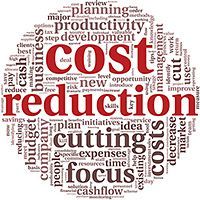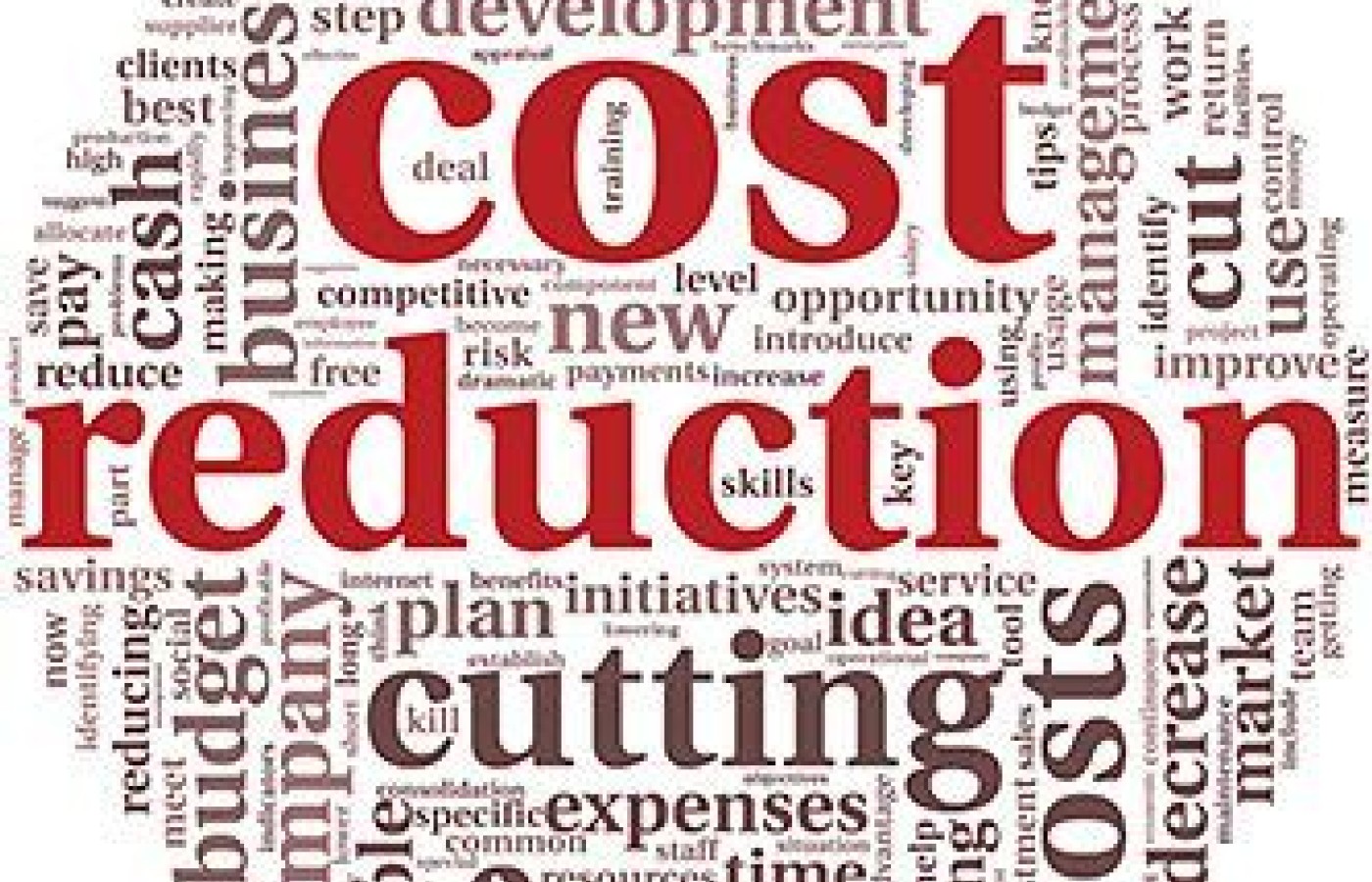It is estimated that 61% of patients with CTS avoid taking surgical options due to postoperative complications and costly surgical procedures. Chiropractic care offers a comprehensive and effective treatment for carpal tunnel syndrome, addressing the condition from multiple angles. Recent studies also have unveiled a game-changing adjunct to chiropractic treatments for CTS: nerve flossing.
Control Overhead to Increase Profitability and Practice Value
Keeping your operational / overhead costs as low as possible is a key factor in increasing net income and the ultimate value of your practice. Every DC should always be on the lookout for ways to reduce practice expenses as a way to increase their actual take-home pay, as well as increase the fair market value of their practice if the time comes that you choose / need to sell.
With the overhead of the typical chiropractic practice around 55-65 percent of revenues or gross collections, working to control expenses has to be a high priority. Although many DCs believe seeing more patients will compensate for excessive operational expenses, that isn't necessarily true. With more patient volume and increasing revenues usually come higher advertising costs, employee compensation, taxes, repairs, equipment upgrades, supplies, etc. Some DCs who are experiencing rapid practice growth may even decide to rent, lease or buy a much larger office space, which can also add dramatically to overhead expenses.

The most profitable practices – and by that I mean the ones that generate the most net income or dollars in the DC's pocket after all business expenses are paid – have overheads of 35-45 percent, and in a few instances even lower.
Starting a 12-Month Expense Reduction Plan
To initiate an expense reduction plan to maximize net profit and take-home income, start by getting baseline measurements. Your accountant should be able to figure out overhead expense percentages in key categories. These should include the building and occupancy costs, staff salaries, supplies, equipment leases, advertising and promotions, insurance, seminars, management consulting, business loans, etc.
After going over these expenses with a "fine-tooth comb," it is absolutely necessary to determine which can be eliminated or reduced. Ask yourself, "Do I really need a 3,000 square-foot office space, or can I function just as well in a 1,000-1,200 square-foot space? Do I need to lease or purchase the latest high-tech X-ray machine, adjusting table and/or adjusting instrument? Is my advertising cost-effective?
To answer these questions, evaluate how many new patients have been generated by such efforts and how much additional income has come into the office. Has the added income generated by advertising offset any additional overhead costs? Does the cost of seminars or management consulting really increase your patient volume and net income? Are any employees being paid much more than their true market value, or could another be hired to do the same job for less money? You must provide a honest, objective and unemotional assessment of your practice to answer these questions accurately.
Revisiting Your Practice's Fair Market Value
Eventually, every doctor stops practicing, whether due to retirement, health issues, family relocation, practice expansion or a desire to change careers. And of course, any potential buyer will want to know the purchase price or fair market value of the practice. As a practice broker and appraiser, I cannot emphasize enough how important practice expenses are in helping to determine what a practice is worth the open market. The buyer and their practice-acquisition lender will need to know this information.
From the buyer's perspective, they would hope to duplicate the seller's net income after all expenses, including a loan, are determined. All lenders also have to know this to determine their risk. Obviously, the lender wants to feel secure that the purchaser is able to service all the practice overhead expenses, earn enough to fund their lifestyle and personal expenses, and have enough left over to pay the lender the principal and interest on the loan they secured to buy the practice. The same can be said for the seller if they are financing any portion of the practice sale price.
Again, the goal of every DC in this scenario is to get their practice overhead expenses in the 35-45 percent range and for the purchaser of a practice to have their expenses (including loan repayment) at not more than 50 percent.
How High Practice Overhead Affects Practice Value
The following example illustrates how overhead expenses can affect the ultimate fair market value or sales price of a practice. This highly successful practice, located in an upscale area of southern Florida, had average annual gross earnings of $700,000 over the past three years. Practices of this size are rare; perhaps 1 percent of all practices fall into this category. Aside from the owner, the clinical staff included two associate doctors, an acupuncturist, a massage therapist and a physical therapist. Key employees also included an office administrator, two front-desk CAs, an insurance biller and an accounts receivable manager. The DC had been in practice for 25-plus years and wanted to retire and sell all the assets of the business. He decided on his own that the practice had a fair market value of $700,000.
We represented the buyer in this case, who wanted an objective valuation of the practice, and the seller also agreed to go by what we determined as the fair market value. The first step we used in appraising this practice was a statistical analysis.
This included average monthly numbers of new patients, office visits, case average, patient visit average (retention rate,) office visit average, and collection ratio. These statistics were then compared to national averages. We determined that the true fair market value was actually lower because of the excessive overhead expenses: 70 percent of gross annual income.
Initially, the potential buyer thought a practice collecting $700,000 per year and selling for $700,000 seemed like a fair deal and tried to secure financing from a bank. Having been an associate doctor for several years with little personal assets, and requesting what is considered an unsecured loan by a bank and the SBA, led to several rejections. I informed the seller that the buyer would not be able to get bank / SBA financing, so ultimately, the seller agreed to finance the practice sale if the buyer would pay the full asking price, rather than go by my assessment, which was much less than $700,000.
The seller agreed to offer financing to the buyer if he would put up a 20 percent down payment. The seller would then finance the balance $ 560,000 over a 5 year period at an interest rate of 6 percent. The buyer thought this seemed fair and his affluent parents were willing to provide the 20 percent or $140,000 down payment.
Overhead Gone Bad
Was this a good deal for the buyer? Here is how the numbers panned out: With the practice collecting $ 00,000 per year, but with operating expenses / overhead of 70 percent ($490,000), this left the seller with a net income before taxes of only $210,000. For the buyer, the net income would be much less because on top of the existing 70 percent overhead, the buyer would have to pay an additional $10,826 per month or $129,916 per year in principal and interest to the seller for financing.
Providing the practice didn't decline or the gross income stayed exactly the same, the buyer would only have a net income of $80,000 per year – not a great return on a $700,000 investment, not including the interest charges. One would hope to be compensated much more for a practice collecting $700K per year.
In analyzing this situation, my advice to the buyer was to not pay the asking price for the practice, as the inherent risk was too high and return on investment was far too low. If the overhead expenses on this practice had been in the 35-45 percent range, then the $700,000 asking price would have been justified. This is a perfect example of why you should do all you can to bring down your practice overhead.



